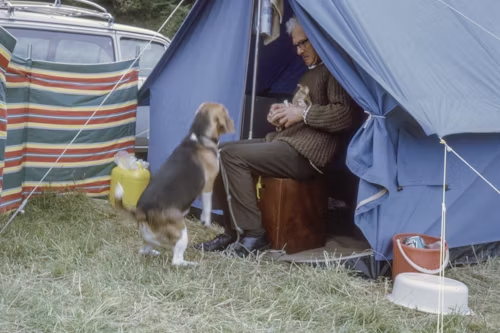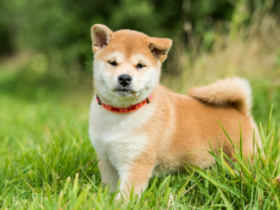Camping with your dogs can be one of the most rewarding experiences. Imagine the joy on their faces as they explore new terrains, sniff new scents, and enjoy the great outdoors alongside you. However, camping with dogs requires careful planning and preparation to ensure that the trip is enjoyable and safe for everyone involved. This guide will walk you through everything you need to know about camping with your dogs this summer, from packing the right gear to ensuring their safety in the wild.
1. Planning Your Trip
- Research Dog-Friendly Campsites: Not all campsites welcome dogs, so it’s crucial to research and book a dog-friendly campsite in advance. Look for sites with amenities like dog parks, trails, and access to water.
- Know the Rules: Each campsite has its own set of rules regarding pets. Some may have leash laws, while others might restrict dogs in certain areas. Be sure to familiarize yourself with these regulations before arriving.
- Consider Your Dog’s Temperament: If your dog is anxious or reactive, a bustling campsite may not be the best environment. Consider quieter, more secluded sites or off-season trips for a more relaxed experience.
2. Packing Essentials for Your Dog
- Leash, Harness, and Collar: Always pack a sturdy leash, a comfortable harness, and a collar with up-to-date ID tags. A hands-free leash can be particularly useful during hikes.
- First Aid Kit: A pet-specific first aid kit is a must. Include items like antiseptic wipes, bandages, tweezers, and any necessary medications your dog might need.
- Food and Water: Bring enough food to last the entire trip, plus extra in case of emergencies. Collapsible bowls are convenient for feeding on the go, and always have plenty of fresh water available to prevent dehydration.
- Bedding and Shelter: Even if your dog is used to sleeping on the ground at home, they’ll appreciate a soft, clean place to rest after a long day. A portable dog bed or blanket can make them more comfortable. If they’re used to being indoors, consider a dog tent or a crate for added security.
3. Health and Safety Considerations
- Vaccinations and Health Check: Ensure your dog is up-to-date on vaccinations, flea/tick prevention, and heartworm medication. A pre-trip vet visit is a good idea to ensure your dog is healthy and ready for the adventure.
- Microchipping and Identification: Make sure your dog’s microchip information is current and that they’re wearing a collar with your contact information. In case they get lost, these precautions can help reunite you quickly.
- Temperature Control: Summer camping can get hot, so it’s vital to monitor your dog for signs of heat exhaustion. Provide shade, keep them hydrated, and avoid strenuous activity during the hottest parts of the day.
- Wildlife Awareness: Be aware of the wildlife in the area where you’ll be camping. Keep your dog on a leash to prevent them from chasing or being chased by wild animals. Check them regularly for ticks, especially after hikes.
4. On the Trail: Hiking With Your Dog
- Choose Dog-Friendly Trails: Research trails that are suitable for dogs, considering factors like length, terrain, and elevation. Some trails might be too challenging for certain breeds or older dogs.
- Trail Etiquette: Always keep your dog on a leash and under control. Respect other hikers and wildlife by cleaning up after your dog and staying on designated trails.
- Pace and Breaks: Pay attention to your dog’s energy levels and take breaks as needed. Offer water frequently and let them rest in shaded areas to prevent overheating.
5. Camping Activities for Dogs
- Swimming: If your campsite is near a lake or river, swimming can be a great way for your dog to cool off and have fun. Just make sure the water is safe and free from strong currents or harmful algae.
- Fetch and Playtime: Bring along their favorite toys for a game of fetch or tug-of-war. This not only keeps them entertained but also tires them out, making for a calmer evening around the campfire.
- Exploring and Sniffing: Allow your dog some time to explore and satisfy their curiosity by sniffing around the campsite. It’s mentally stimulating and can help reduce anxiety in a new environment.
6. Nighttime Considerations
- Comfortable Sleeping Arrangements: Make sure your dog has a comfortable place to sleep, whether it’s in your tent with you or in a separate dog tent. Bring their favorite blanket or bed to make them feel at home.
- Lighting and Visibility: A reflective collar or a LED light can help you keep track of your dog in the dark. This is particularly important if you’re camping in a remote area with little to no ambient light.
- Nighttime Safety: Be mindful of nighttime wildlife and keep your dog close to avoid any unwanted encounters. If your dog tends to wander, consider using a tether or portable fencing.
7. Dealing With Emergencies
- Injury or Illness: Know the location of the nearest emergency vet clinic and have a plan in case your dog gets injured or sick. It’s also wise to carry a basic understanding of pet first aid.
- Lost Dog Protocol: In the unfortunate event that your dog goes missing, have a plan in place. This includes searching the area, notifying the campsite management, and using social media or local resources to spread the word.
8. Post-Camping Care
- Check for Ticks and Pests: After your trip, thoroughly check your dog for ticks, fleas, and other pests. Pay close attention to areas like the ears, belly, and between the toes.
- Bath Time: Even if your dog didn’t get particularly dirty, a bath is a good idea to remove any allergens, dirt, or pests they might have picked up during the trip.
- Monitor Their Health: Keep an eye on your dog’s behavior in the days following your trip. If they seem lethargic, aren’t eating, or are showing signs of distress, a visit to the vet might be necessary.
9. Final Tips for a Successful Trip
- Practice at Home: If this is your dog’s first camping trip, consider setting up a tent in your backyard or going on a short day trip to get them accustomed to the experience.
- Stay Flexible: Be prepared to adjust your plans based on your dog’s needs. If they’re showing signs of stress or exhaustion, it’s okay to cut a hike short or take a rest day.
- Enjoy the Moment: Finally, remember that camping with your dog is about enjoying the great outdoors together. Take time to relax, bond, and appreciate the experience.
Camping with your dog this summer can be a fantastic adventure for both of you. With proper planning and preparation, you’ll create memories that will last a lifetime. Whether it’s your first time camping with your dog or you’re a seasoned pro, this guide provides everything you need to know to ensure a safe, enjoyable, and unforgettable trip. Happy camping!











Leave a Reply